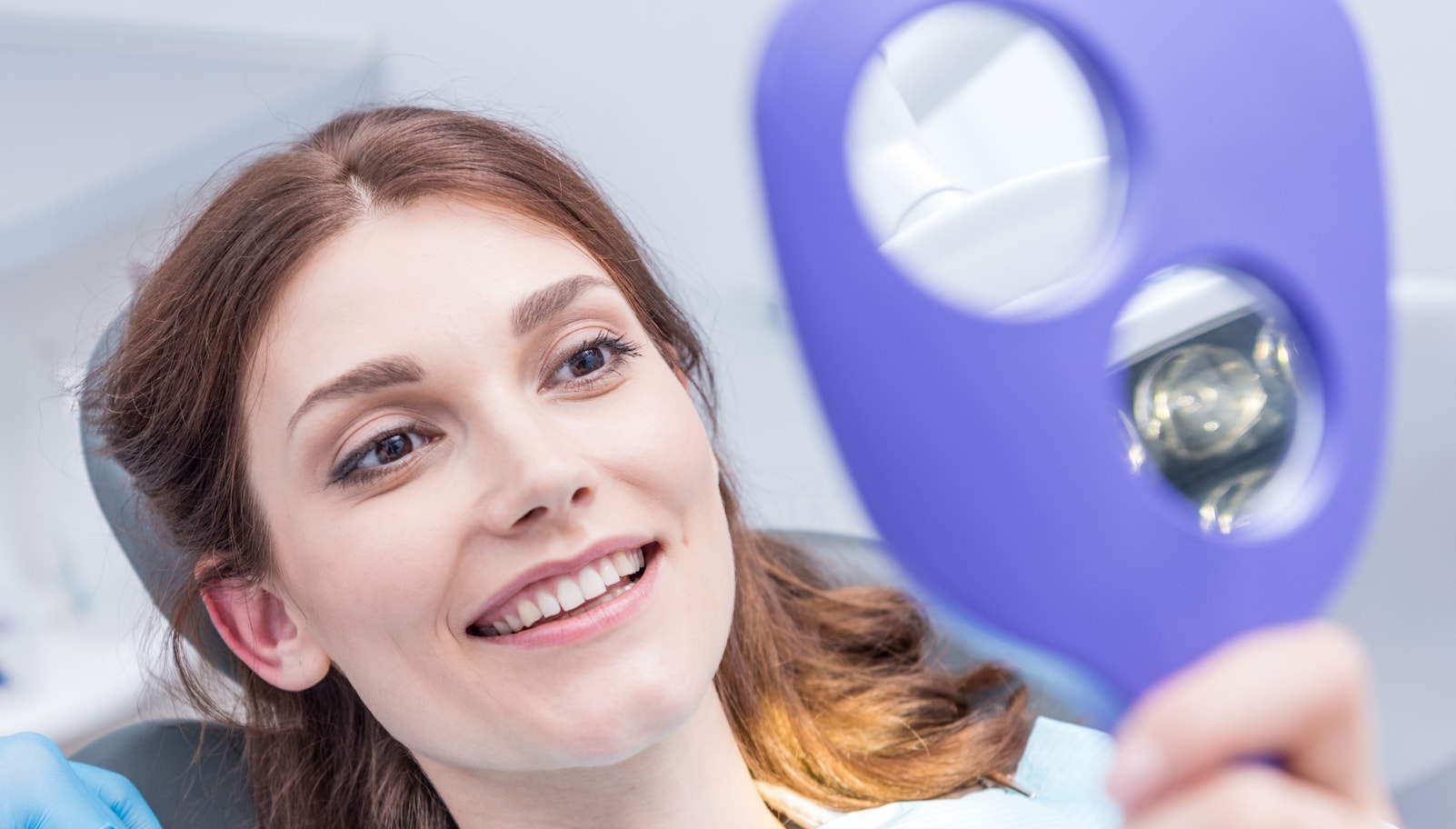
Adhesive dentistry enables dentists to adhesively bond porcelain veneers, direct and indirect composites (white fillings), and other materials to the natural substance of teeth (enamel and dentin). The dentist applies various resin based adhesives and tooth-colored materials that can be bonded to the tooth and enables dentists to fill holes in teeth, closes spaces, and improve the overall appearance of the teeth.
The development and evolution of reliable enamel and dentin adhesive techniques is one of the most important innovations to ever emerge from and impact the field of dentistry. The adhesives and bonding technology currently available for use by dentists enables them to predictably place porcelain veneers on the teeth. Adhesive dentistry also makes placing direct and indirect composites, which are tooth colored fillings, and a number of other esthetic and restorative materials possible. In fact, the longevity and predictability of most currently available dental restorative procedures is due to the advances in the ability to bond tooth-colored materials to the tooth structure.
The use of adhesive bonding procedures allows a dentist to correct certain situations with the teeth. Some of these dental issues include spaces between the teeth, dark and discolored teeth, and broken teeth. These issues can be rectified with an ease and a precision that was not possible in past years because of advances in adhesive dentistry. In fact, adhesive bonding gives patients multiple viable alternatives to amalgam/silver fillings such as tooth colored composites.
Most adhesive bonding requires the dentist to first clean and prepare the tooth structure in the area being bonded during the procedure. Once these steps are completed, the dentist performs a careful placement of the primers and also various adhesives and restorative materials including porcelain and composite.
There are some advantages to direct bonding of the front teeth as opposed to porcelain veneers which are fabricated in a dental lab and then bonded into place by a dentist. Dental bonding, which is performed while the patient is in a chair, requires a skilled dentist to treat the tooth surface with adhesives followed carefully by precise layering, sculpting, and polishing of the tooth colored composites. The dentist then cures them with a special bonding light. The advantage of direct bonding is that it can generally be performed in one visit and it usually costs less than porcelain veneers.
On the other hand, porcelain veneers are sometimes a better choice than free-hand bonding. They typically do require some amount of tooth preparation which is followed by the taking of impressions that are then sent to a dental lab. The veneers are fabricated in the dental lab and returned to the dentist to bond on the teeth of the patient. Properly done porcelain veneers are among the most beautiful restorations in dentistry.
There are a few limitations in the use of adhesive dental bonding. Occasionally, the bonds that hold adhesive bond restorations deteriorate over time and can result in the restorations becoming loose and even falling out. The restorations can also chip or break as time passes. This is especially true if the patient grinds their teeth on a regular basis or has bad habits such as fingernail or cuticle biting. In these situations, the restorations can normally be bonded back in place or even repaired. However, there are times when a brand new or different type of restoration is required for the patient.
When it comes to direct bonding procedures, there is essentially no downtime required on the part of the patient. In the case of lab fabricated porcelain veneers, temporary or provisional veneers are often required while the final veneers are being fabricated. Patients need to exercise care and caution when eating while wearing the temporary veneers because they can fracture or come loose if the patient is not careful. Also, if the tooth position or the length of the teeth is being altered there will sometimes be an adjustment period for the patient’s lips and tongue as they get used to the feeling of the new position.
The materials that are used for adhesive bonding procedures have greatly improved over the years. When they are used in appropriate clinical situations and properly placed, the results can be long-lasting. For example, several clinical studies have shown that 90% of porcelain veneers that are properly done and placed can survive ten years or more. However, just like any material, bonded restorations can break down or fail as time passes. In the case of free-hand bonding, some touch-ups or re-polishing can be required from time to time.
The biggest variable in the longevity of any dental restoration is the patient. Patients with poor oral hygiene and who drink a lot of acidic and sugary drinks, smoke, grind their teeth, and clench their teeth are much more likely to experience problems with the results of their dental work.
Both dental bonding and porcelain veneers can look beautiful when properly performed in the appropriate clinical situation. However, every situation and every patient is different so the dentist needs to determine which technique is the best choice to achieve the desired results in each specific case.
Patients often visit the dentist because they want their teeth to look better. Having ugly, discolored and worn-out teeth can have a very bad effect on the self-esteem of individuals. A skilled dentist can drastically change the teeth and the smile of patients using adhesive dental bonding. If a person is not happy with the way their teeth look, the technology exists to make a positive change in their appearance.
Written by Cosmetic Town Editorial Team- MA
Based on an exclusive interview with Gary Alex, DDS in Huntington, NY